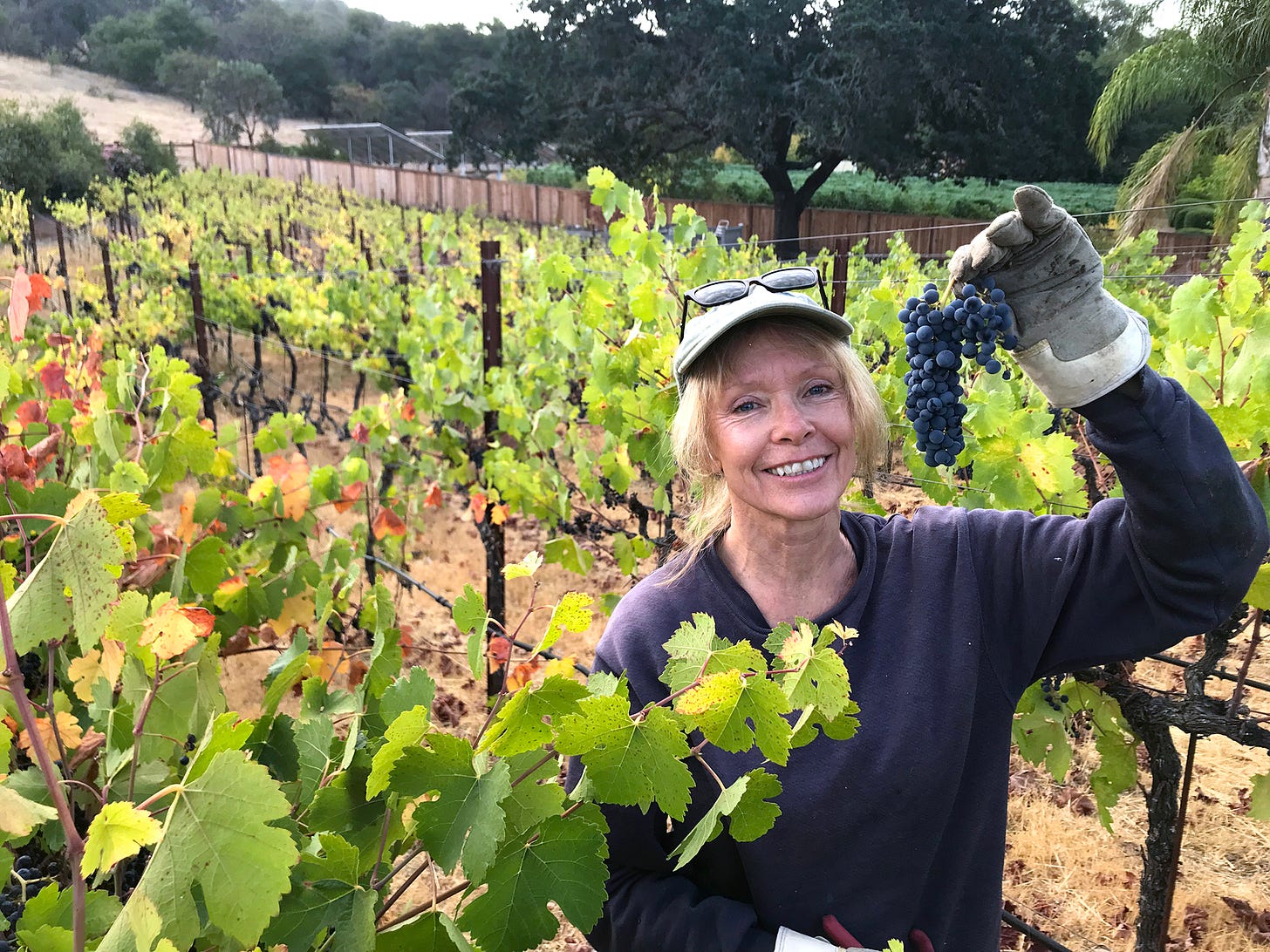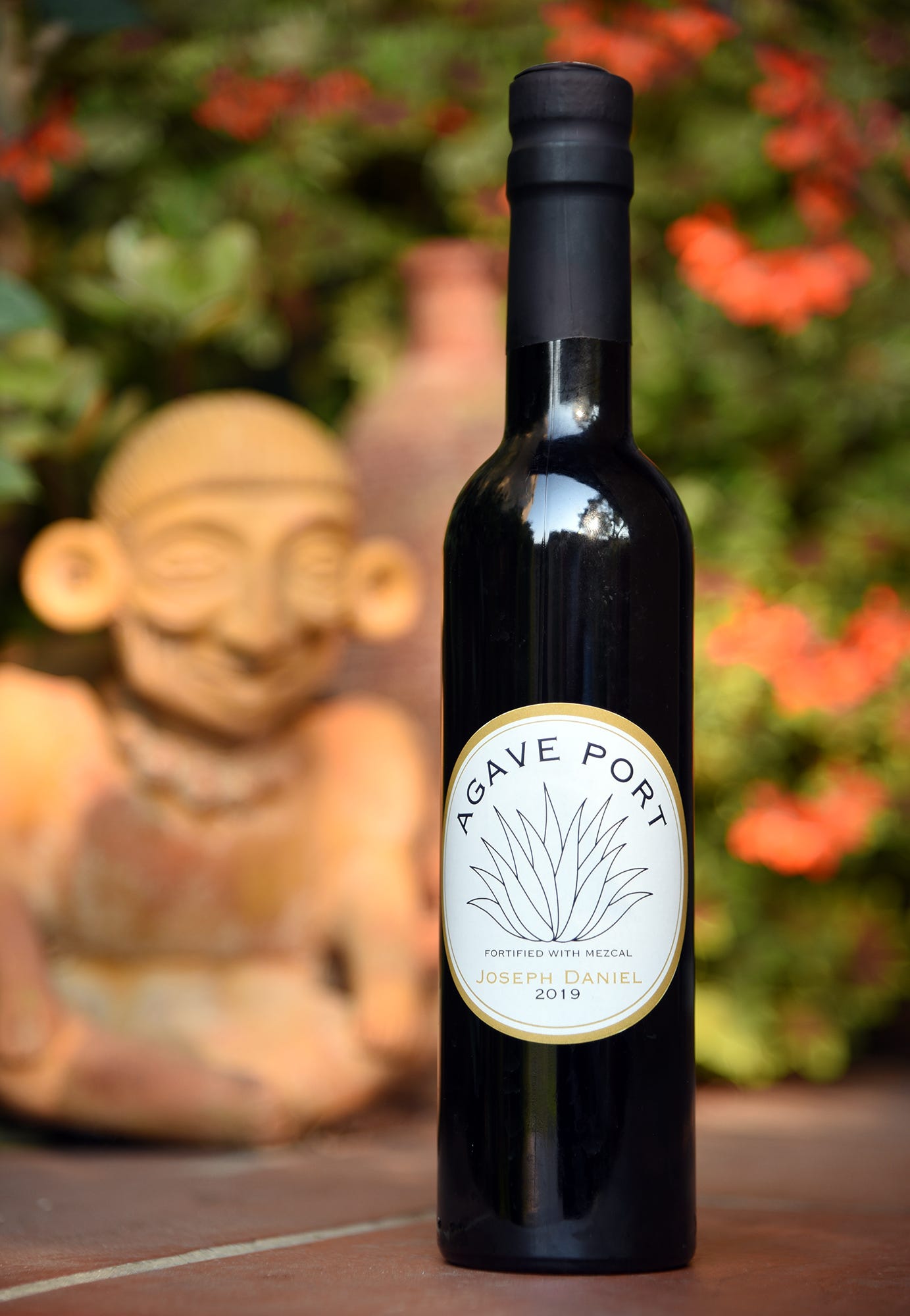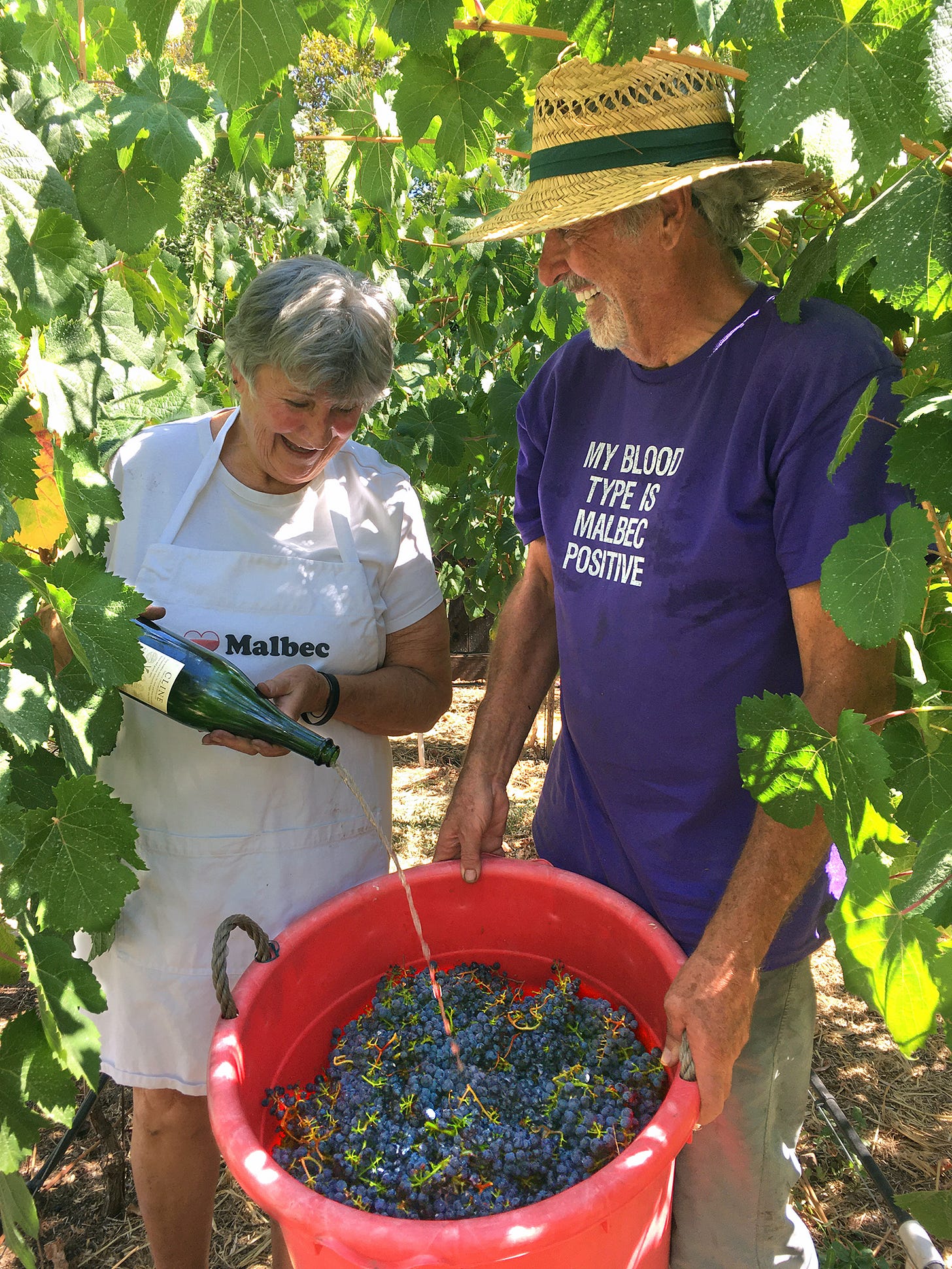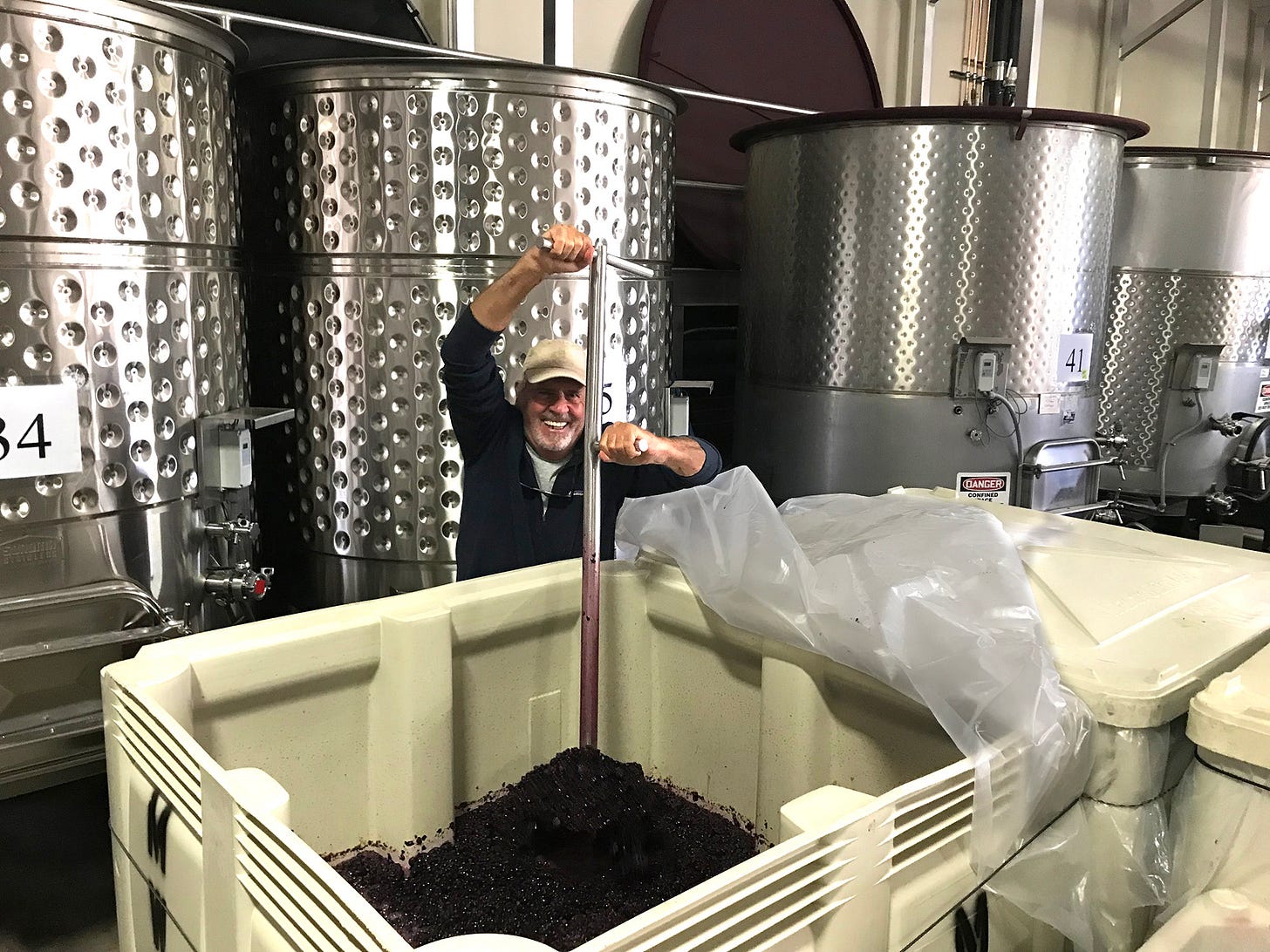Harvest 2021 - So, here's my plan...
Four tons of commercial grapes and a bunch of private lots. Yeah, sure!
Chaos is roving through the system and able to undo, at any point, the best laid plans. —Terence McKenna
The best laid plans of mice and men…
Howdy folks! I’m back after what was probably the craziest, funnest, most intense 45 straight days I’ve ever experienced. I had hoped to write about it here as we went along but that didn’t happen. Most of the time I just collapsed into bed at the end of each day and the alarm rang five minutes later (or so it painfully seemed) for the beginning of the next.
I did manage to post almost daily on Instagram, so check that out if you haven’t yet @tiny_vineyards—it’s sort of a highlights reel! In any case, read on…
My plan for Harvest 2021 was relatively simple. For my first commercial wines I planned to pick four different one-ton lots of grapes—a Zinfandel/Petite Sirah field blend, a Cabernet Sauvignon, a Syrah, and a Malbec—probably in that order over the course of about a month, depending on how ripening went. Each lot represented two 60-gallon barrels of wine plus two or three 15-gallon beer kegs for topping-off wine, so about 150 to 165 gallons of wine from each lot.
I would process each one-ton lot separately at Magnolia (my bonded custom crush facility), but then I would blend the two barrels of the Zinfandel/Petite Sirah with one barrel each of the Cabernet Sauvignon and the Syrah. All of those together would make 100 cases of my California-style red blend I called Heritage. The second barrel of Cabernet Sauvignon and the second barrel of Syrah would each be made into 25 cases of that specific varietal, and the two barrels of Malbec would be made into 50 cases of that varietal—I had special plans for it.
So in the end—with luck—the Tiny Vineyards Wine Company would come to market with a total of 200 cases of wine. That may be one of the smallest launches in the history of wine companies, but it still represents 2,400 bottles, which is a little bit bigger number when you realize that at some point you have to sell them all!
Since there appeared—at least on paper—to be plenty of time in between these four one-ton lots, I also planned to pick a few much smaller, non-commercial batches of grapes in the 250- to 500-pound lot size. I would process all of these in my backyard winery at Bobbie’s, where I could experiment with different vineyards, varietals and vinting methods. I had a few I wanted to test already in mind, but I also knew that as the season progressed all sorts of interesting opportunities would likely arise, and I wanted to stay flexible and be able to take advantage of those last-minute deals.
Over the next few postings I’ll dive deep into the detail of all the grape carnage I committed—especially with those one-ton lots!—complete with some whacky video of our group picks and the commercial processing at Magnolia. But today I want to start with the different small picks we did in between, and try to understand how I now have seven different varietals equaling 128 gallons of brand-new wine aging peacefully in Bobbie’s backyard.
The small picks
Back in January of this year, when the endless pandemic finally drove me out of the house in search of outdoor recreation, sanctioned or otherwise, I found myself playing golf at the Valley of the Moon course with my winemaking muse Ken Wornick. We got paired with a friendly couple named Mike and Kate Hoesly. He was retired but she still worked a second career as a respiratory therapist, which of course elicited a few requisite questions on the risk of health-care workers and their access to the then just-released Covid vaccine. I couldn’t help but finger my mask, which I had stuffed in my pocket when we teed off.
Mike and Kate had played a lot of golf together over the years and they both could hit the ball, although Mike suffered from two bad knees and was pretty much relegated to the golf cart. Which was why, he explained, he couldn’t seem to get full rotation on his swing to keep Kate from out-driving him.
We had a fun time, and as we all got to know each other Ken explained that he and I were winemakers. I love that about Ken. He’s a real winemaker, while I’m still more of a poser. But he never fails to introduce me on par with himself. At that news Mike allowed as to how they had a small Zinfandel vineyard of their own up in Windsor, and if we were ever interested in buying any grapes…
Ken’s pretty good at deflecting enological solicitations that don’t fit his scale of vineyard management, but I jotted down their contact information. You never know. The next day I fired off an email to Mike letting him know I might be interested in some grapes come next fall. I didn’t hear back from him for nearly ten months, but then, out of the blue, I get an email on September 1 asking if I wanted any grapes. Seems they were nearly ready to pick and his old buyer Hans Fahden Winery wasn’t interested this year.
On further questioning, Mike expounded that, in fact, Hans Fahden hadn’t bought his grapes for the past three years. And there was a reason for that. It seems that Mike and Kate’s vineyard—80% Zinfandel, 10% Petite Sirah, and 10% Carignan—had suffered badly in the 2019 Kincade fire, which burned through 100 square miles, broaching the Hoeslys’ property and threatening their home. Due to Mike’s bad knees he couldn’t get out and tend to the vineyard properly after the fire or prune it well that following winter.
Since then, Mike has had both his knees replaced and is well on his way to recovery. The vineyard is still pretty ragged in places but it had decent fruit set in the vines that were slowly recovering. I told Mike I wasn’t interested in buying any fruit but if he wanted me to make a small batch of wine just to check the quality after the fire damage I’d make a 15-gallon barrel if he supplied the grapes. He agreed, so Deb and I showed up at dawn on September 8th and picked the entire vineyard in a couple of hours. We got about 280 pounds of Zinfandel, 100 pounds of Petite Sirah, and a measly 9 pounds of Carignan. We held out about 90 pounds of the Zin to crush separately and make 5 gallons of Port (see just below), and we crushed everything else together as a field blend to get just enough juice for a 15-gallon barrel.
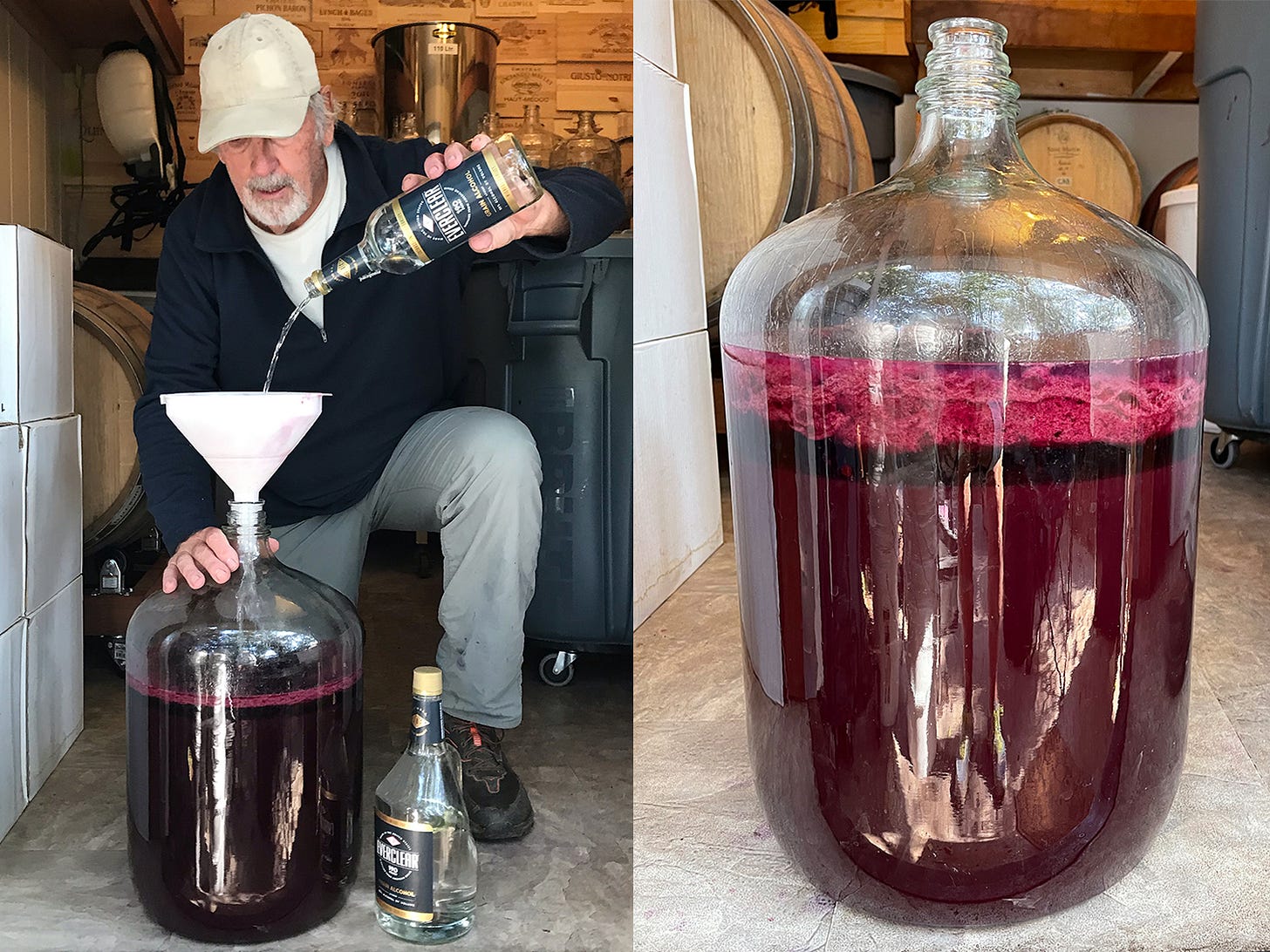
A Port in any storm
I’ve always of thought making Port as sort of a foolproof entry-level form of home winemaking—like frying an egg or making toast is to cooking—i.e. anyone can learn to do it adequately. You just harvest a bunch of overripe grapes, ferment them until you’ve reduced the sugars by roughly half, then throw in the appropriate fortifying spirit to bring the yeast to a screeching halt and you have a really yummy, really sweet wine with a lot of alcohol that is virtually spoil-proof and actually gets better with oxidation. Am I right?
Of course I am. And of course I’m not. The devil here is in the details and the nuances associated with making Port quickly elevate it to haute cuisine. What kind of grapes do you use, what degree Brix are they harvested at, what type of spirit are you using for fortification and at what percentage of total Port volume, what degree Brix do you fortify at, what kind of vessel or barrel do you age it in and for how long, and how do you use oxygen to your advantage? The list goes on and on.
Just as fascinating are the recipes, or formulas, used to help determine much of the above. Here’s the formula I consulted for making Port from the Hoeslys’ grapes:
A = % of alcohol of fortifying spirit
B = % of alcohol in the wine to be fortified
C = target alcohol content of Port
D = C minus B
E = A minus C
D divided by E = % of fortifying spirit
As an experiment, I fermented this Port with 5 grams of Lalvin 71B, a low alcohol tolerant yeast for white wines, hoping it would go slow with the extra alcohol being produced and get better extraction. I let it ferment down to 10 Brix and then pressed it with my hands through a sieve, just getting the needed 5 gallons of juice that I then immediately fortified with 2.5 liters of 190-proof Everclear before it could ferment any further. Commercial Port makers in California are required to use grape distillate of the same strength for fortifying but I figured that last 5% of spirit, whether it comes from grapes or corn, isn’t going to make any difference taste-wise. I let it settle for a couple of days, then racked it off to a great old 5-gallon whiskey barrel I have. In a few years (sheesh) we’ll have delicious Tawny Port!
The possibilities with Port seem endless. Two years ago I made a Port using a high-octane Mescal distillate as the fortifying spirit, which I got from Sal Chavez, founder of Picazo Kitchen and La Luna Mezcal. It was soft and smokey and very pleasant. I called it Agave Port and it was not unlike smoking a fine cigar with an after-dinner glass of Porto, minus the smoke.
Malbec maniacs
As soon as we finished picking the Hoeslys’ vineyard and loading the buckets of grapes into the back of the car, we blasted back to Bobbie’s place in Sonoma to pick her two-year-old Malbec vineyard so we could crush both lots in the same morning without having to clean all the machinery in between.
Bobbie’s vineyard wasn’t really old enough to pick yet, but it had grown a bunch of grapes this year anyway, which basically drove Bobbie to madness in how much she wanted to make wine from them. I counseled her sternly about how we should just drop the fruit, as is tradition with vineyards in this year of their development, but she would hear nothing of the sort (secretly I was glad as we’re both Malbec freaks and I wanted to see what kind of wine those grapes would make almost as badly as she did!).
The problem was that just a few nights earlier some critters (we think raccoons) had gotten into the vineyard and eaten dozens of low-hanging grape clusters, reducing our yield substantially. But Bobbie was undeterred, so the three of us had great fun picking every damn berry we could find. Bobbie wore her “I heart Malbec” apron and I broke out my “My Blood Type is Malbec” T-shirt and we made a big production out of christening the pick with a bottle of “cheap” champagne.
Our total harvest was only 85 pounds but we were hoping that might be just enough to make a 5-gallon carboy of wine. Somehow during all the cavorting and celebrating I tripped and turned an ankle rather badly, coming up quite lame. This was definitely not good news this early in the harvest season and I tried to walk it off as best I could, finally succumbing to a comfy chair on Bobbie’s patio where she served her first bona fide harvest lunch—a spectacular spread of seriously delicious late-summer bounty!—complete with a decadent bottle of much higher-quality champagne on ice. Deb and Bobbie fussed over my sore ankle and soon had it propped up and wrapped in an ice pack, with me well on my way to being anesthetized with the bubbly.
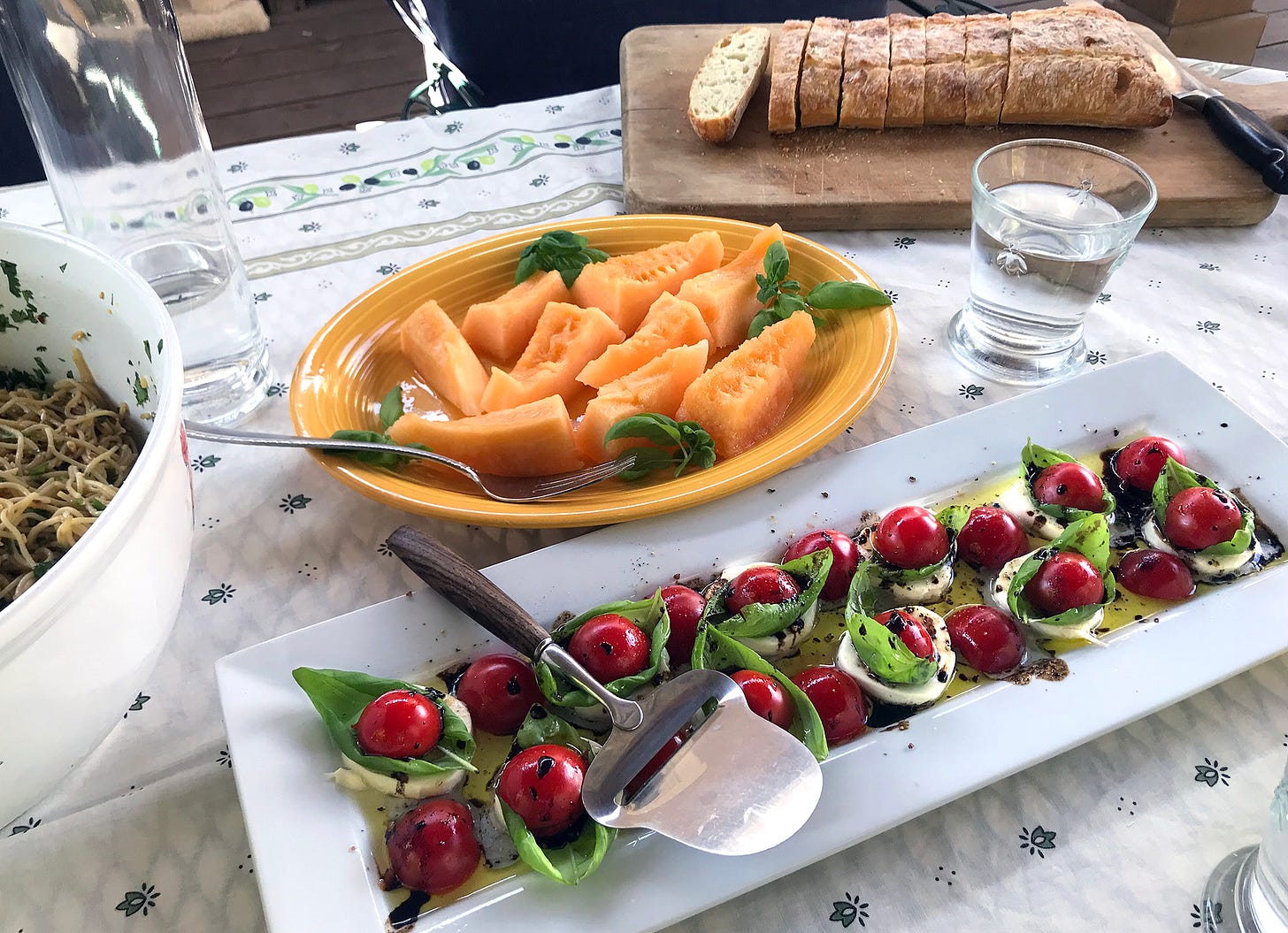
Within a few days after crushing Bobbie’s Malbec faint wisps of an unpleasant odor started to develop in the must. At first I couldn’t figure out what was causing it, as we had been very careful with sanitation and had treated the must with a low dose of potassium metabisulfite the day before inoculating it with a proven commercial yeast called Tango, which was cultured from a native yeast collected in the famous Malbec vineyards of Argentina. Too early for a Brettanomyces contamination and not really the solvent smell resulting from Acetbacter bacteria turning acetic acid into ethyl acetate.
Yeah, I now know just enough wine chemistry to be dangerous, but not enough to really be useful. But then as the odor became more prevalent I suddenly recognized it as the rotten-egg smell of some type of volatile sulfur compound, probably hydrogen sulfide. This can result from lack of nutrition for the yeast and/or lack of oxygen in the must—hardly a surprise here, as in an effort to reach a minimum yield we had picked any and every grape we could find including funky overripe ones, worthless raisins, and weird immature berries, as well as excess stem material, all resulting in a very thick, compressed must. I needed to get this juice off the gross lees (all that vegetative material) as soon as possible.
Fortunately, despite the issues, the fermentation was successful and I was able to gently hand-press about four gallons of wine through a sieve. That action alone volatilized much of the H2S, and after letting it settle for a couple of days I splash-racked it to a new container which further reduced the smell to where it was hardly noticeable. We’ll see yet if we can get Bobbie a few bottles of wine in the end!
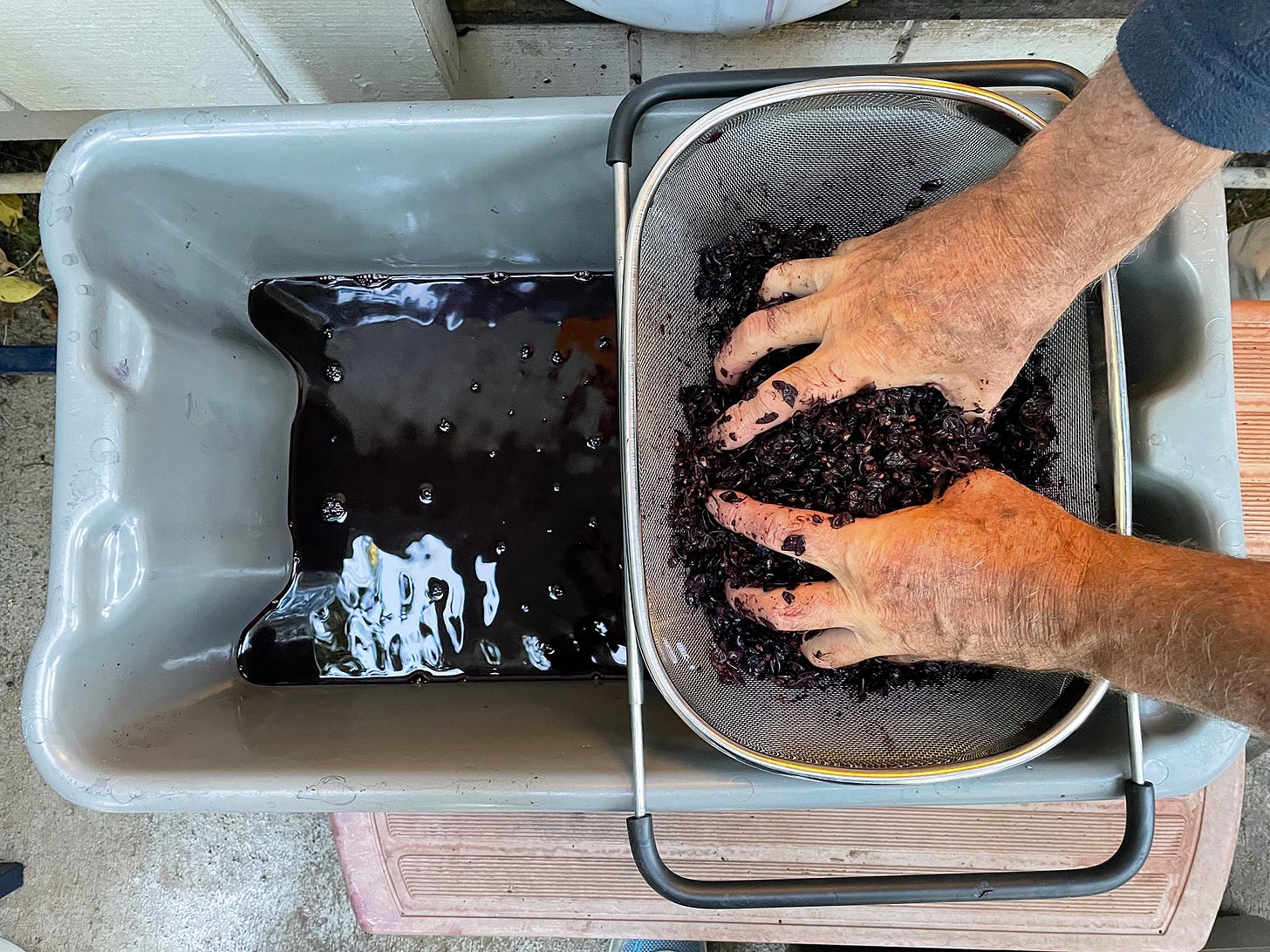
Meanwhile, back at the ranch…
So, we were only eight days into the season and already we had three different wines underway at Bobbie’s (including one with a potentially odiferous future!), my ankle was swollen up to my calf with nasty bruises on both sides and was so painful I could barely walk, and let’s not forget the one ton of Zinfandel and Petite Sirah grapes we had harvested down in Oakley on September 1 (which I wrote about earlier). Those grapes were well into fermentation out at Magnolia, requiring a twice-daily punchdown—a harbinger of just how busy everything was about to get. Stay tuned!




